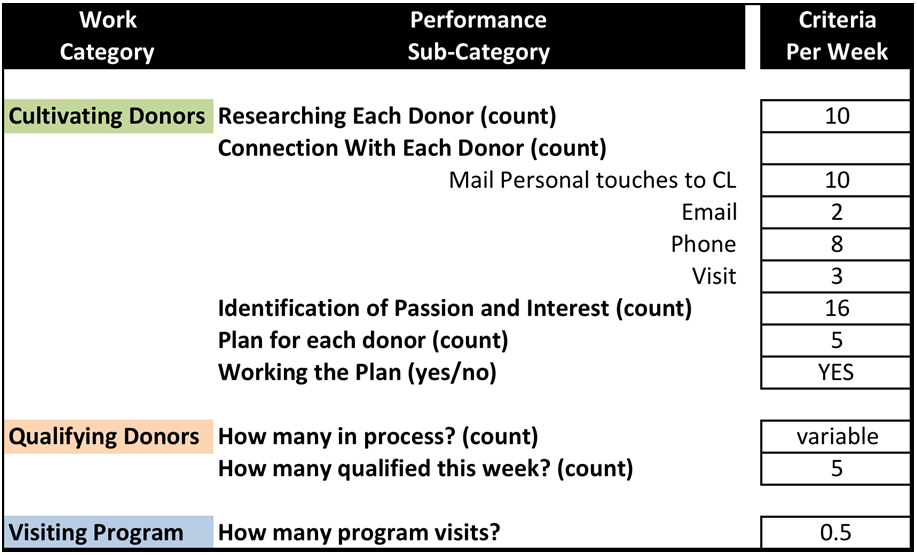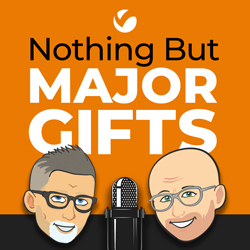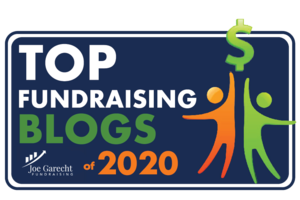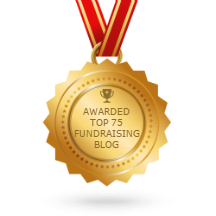
What should you measure as relates the MGO’s use of time? What really matters? Here’s our opinion on the subject. But before I dive in, I want to be clear that there are two broad areas of MGO performance measurement:
- How is the MGO doing in cultivating and maintaining donor relationships? This has to do with stewarding donors.
- How is the MGO doing in reaching financial goals?
I addressed these two points in my post before this one about creating a balance between relationship and numbers. This is a must. You cannot have a bias of one over the other. So, at the highest level, the MGO and the MGO’s manager need to focus on both of these items.
But today, in this post, I am addressing the MGO’s use of time. If you’re an MGO reading this post, my questions to you are: What are you focused on? What occupies your time? Same questions for the manager: How is your MGO using his or her time?
As you know, Jeff and I are obsessed with how time is used and what the MGO pays attention to. That’s why we write so much about this topic. And, bottom-line, the MGO needs to be primarily focused on matching caseload donor interests and passions to the needs of the organization. Period. Nothing more.
This may sound too simplistic, but let me explain what I mean.
Matching donor interests and passions to the needs of the organization, at the highest level, involves qualifying and cultivating donors and visiting program. Let’s break each of these down.
Qualifying Donors for Caseload – This point assumes that the MGO needs more donors on her caseload. If she doesn’t, then you can skip it. In the case of my chart above I was helping a new MGO build a caseload. And she needed to qualify 5 donors per week.
Cultivating Donors – There are several critical things that must be done in cultivating donors:
- Researching the Donor – it is very important to keep a high level of activity around researching donors. I find that many MGOs do not do this well. I can’t tell you how many conversations I’ve had with MGOs about a particular donor strategy and I ask if the MGO has Googled the donor. No he or she hasn’t. It is really frustrating to me. I remember one situation where, while we were speaking about a particular donor, I did an internet search and found some interesting facts about the donor. I said, “Well, I just looked him up on Google and found X about that donor. Did you know that?” Nope! Goodness. Is it that hard? This research part is a good activity for your admin person if you have one and he or she is good at it. But the level of researching every week needs to be high. Why? Because information is what fuels relationship and success.
- Connection to Donors – In the major gift “business” this is a no-brainer. You have to connect. One thing on this point I find interesting is some managers’ insistence that their MGOs have a face-to-face with each donor on their caseload. This is crazy. What if the donor is a phone or e-mail preference donor? Just go with that. Eventually, if you do the email and phone thing right, the donor will want to meet face-to-face. But personal visits should NOT be the major goal. Connections should. Big difference.
- Identification of Interests and Passions – This one is a pet peeve of mine. We do NOT do a good enough job of identifying the interests and passions of donors. We don’t. And I get so many excuses for not doing it. “They don’t have any special interests or passions,” or, “I can’t get them to tell me,” or, “They are just generally interested in what we do.” All hogwash. All of it. Every human being on the planet has a set of interests and passions. It is up to us to discover them. And, perhaps, Jeff and I need to figure out creative ways to do this and share them. We will.
- A plan for each donor – It goes without saying that each donor on your caseload needs a plan. This is another area that is not done very well. I think the MGO believes it takes too much time to plan and so it gets sloppy. But when you create a plan for each donor you are far more focused and strategic. And focus and strategy leads to success. Most MGOs who are doing really well in managing their donors have a very detailed plan for each of them.
- Working the plan – I really should not have to put this point in here, but I will. Why? Because I have seen so many plans that have just been lost in the files. They were all written up very nicely but never implemented. This tells me the MGO was just “doing what he was told” vs. really believing that having a plan would help.
Staying Connected to Program – You, as an MGO, need to stay connected to program. Notice in the chart above we say .5 times a week or 2 times a month. Here’s why. You must know (head/intellect) what is going on in order to present information to donors. AND, you must feel (heart) the program – the pain and hurt of those you are helping… the state of the environment you are trying to change… the ignorance or injustice you are trying to eliminate, etc. You must feel it. It must get into you and grab your heart. That will not happen if you sit at your desk or just visit donors. You must fill your head and heart with this information and experience.
All of this is what Jeff and I mean when we talk about how the MGO uses his or her time or what the MGO is focused on. And, the performance criteria we have set per week is a sample of what we were doing with one MGO. Your numbers may be different and that’s fine.
The important thing is to have a very specific focus on how you use your time. If you don’t do this you will get off track. And off track means failure. Choose to do the right things. And when you do, the right things will happen to you.
Richard



Awesome! The above is my first Veritus Group Blog email and it really speaks to what I am working on right now. I am a small shop Director of Development and I am trying to figure out some metrics for my work with Major Donors. The challenge, or course, is that I wear more hats than a Major Gifts Officer, so that should affect the above numbers. I knwo every situation is unique but do you have any numbers for someone who is a Director of Development in a small shop who is working on Annual Fund development, campaigns, planned giving, major donors, etc.?
Thanks!
Steve
Hey, Steve. Like you said, all the situations are different. What you might do is come up with metrics for each category of work – just a few metrics – that speak to the core thing you are trying to do in each one. Start with deciding what category is most important relative to the others then create metrics for each one. I’d be happy to review what you come up with and comment. Just email me. Thanks.
Nice post Richard…I printed the graph as a helpful resource to stay focused. Thanks!
Thanks, Ben. Good to hear from you. Glad this is helping.
Thanks, Richard! I especially like the “connection to donors”… I agree that you should find out what their form of communication is and work around that. And, as you mention, the visit will materialize as you connect and build a strong relationship with your donors. I love your blog… thank you for taking time to share your knowledge!
Best –
MaBel